Edwards Air Force Base, where the Air Force and NACA or NASA have tested experimental aircraft since before the Cold War, occupies a vast dry lakebed in the Mojave Desert in Southern California. Although the base lies just south of California State Highway 58, most of it isn’t visible from the road, because sight-lines are blocked by low hills and a railway embankment between the highway and the lakebed. One exception to this is Leuhman Ridge, which rises above the desert floor southwest of the junction of CA-58 and US Highway 395. Several large metal and concrete structures stand on the crest of the ridge, plainly visible from the highway miles away. These are rocket test stands, used in the Cold War and Space Race to test out new rocket engines and test articles of complete rocket stages.
The Air Force started out testing missile components on Leuhman Ridge in the 1950s. Missiles tested there included the Thor IRBM, the Atlas and Titan ICBMs, and the Bomarc cruise missile. Some of the test stands had large gantries that could hold complete missile stages like the Atlas. One of the stands, Test Stand 1-1, still has its gantry in place.
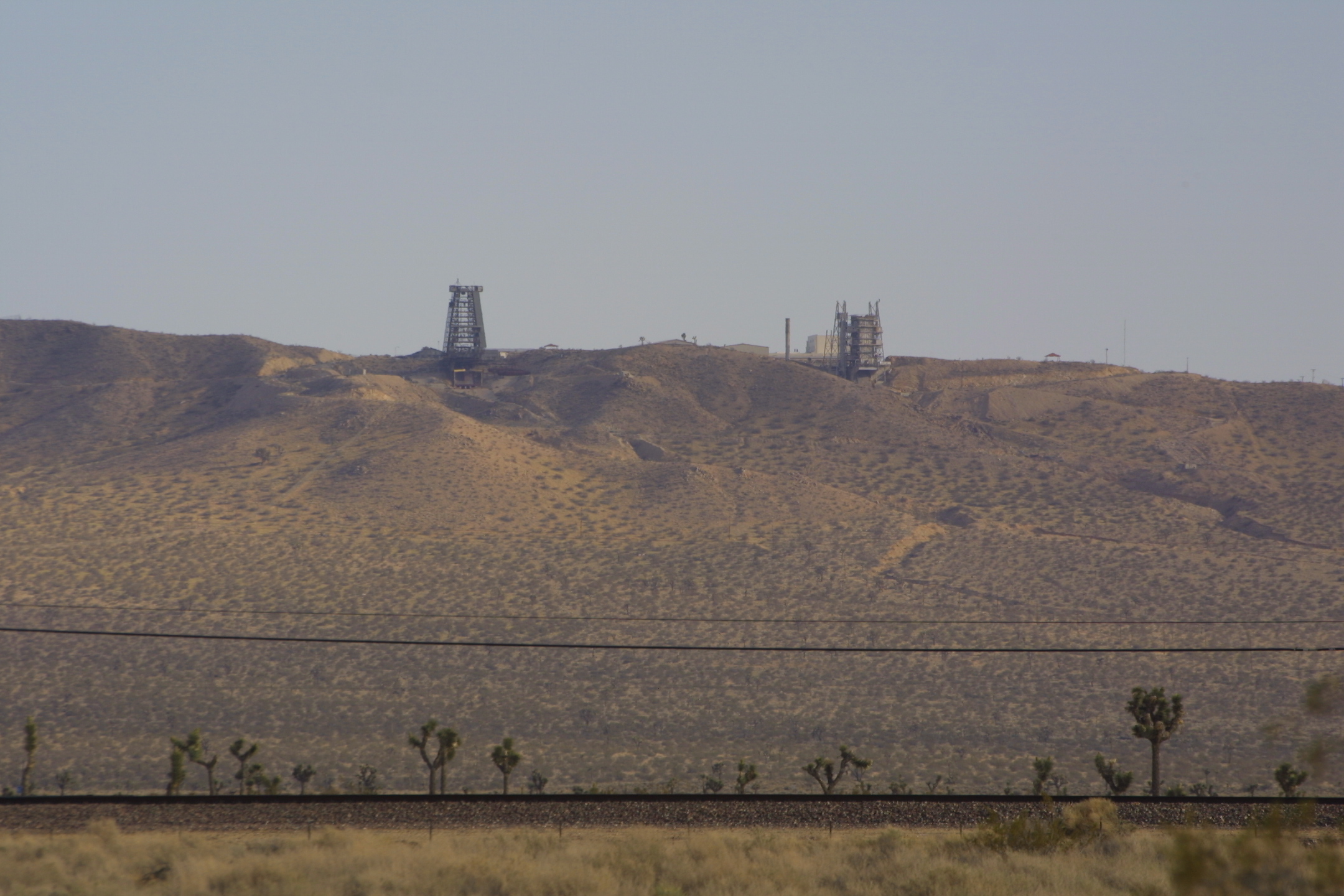
Test stands used for Air Force missiles on the western end of Leuhman Ridge. Test Stand 1-1 is on the left of the picture, with a large gantry that could hold a complete Atlas missile in a vertical position for tests. The stand on the right is 1-2.
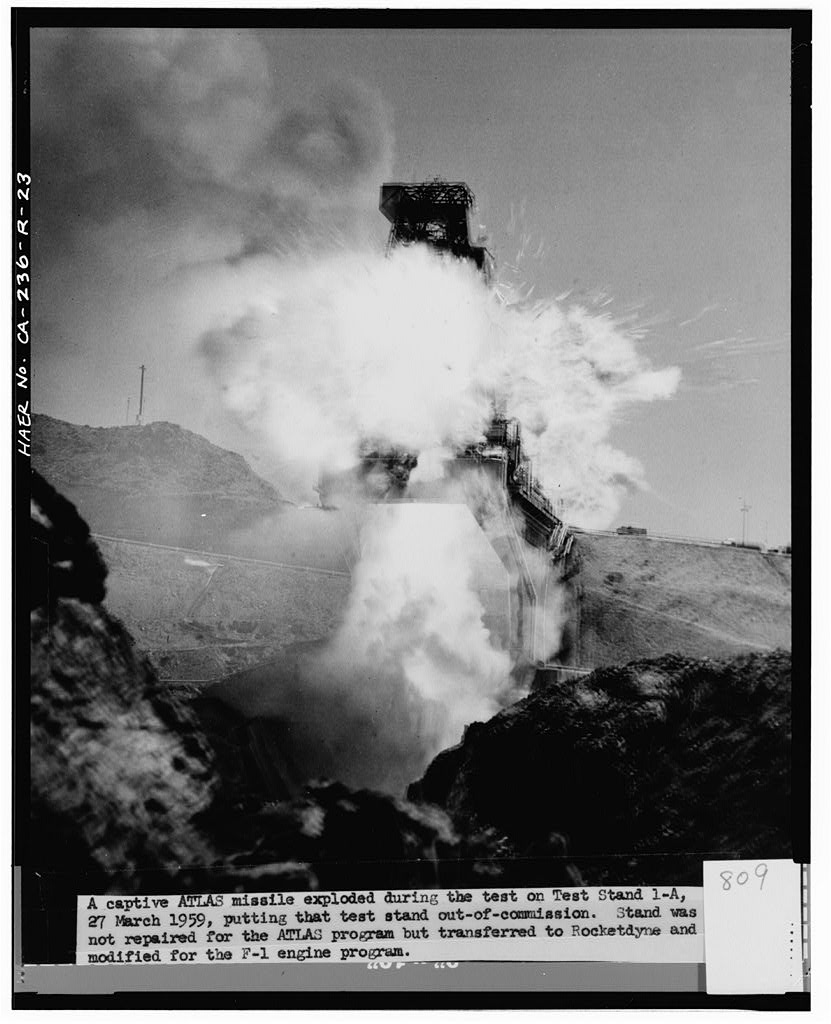
Photo of an Atlas missile exploding in Test Stand 1-A, March 27, 1959. The stand was never repaired for Atlas use but was instead modified for F-1 engine testing. (Source: HAER)
Subsequently, NASA and Rocketdyne tested the F-1 engine for the first stage of the Saturn V moon rocket on Leuhman Ridge. F-1 tests started on stands originally used for the Atlas missiles, then moved to purpose-built stands that were much larger than the earlier missile stands. Rocketdyne test-fired a prototype F-1 for the first time on February 10, 1961, before Alan Shepard’s first flight and before President Kennedy had committed America to the moon race.
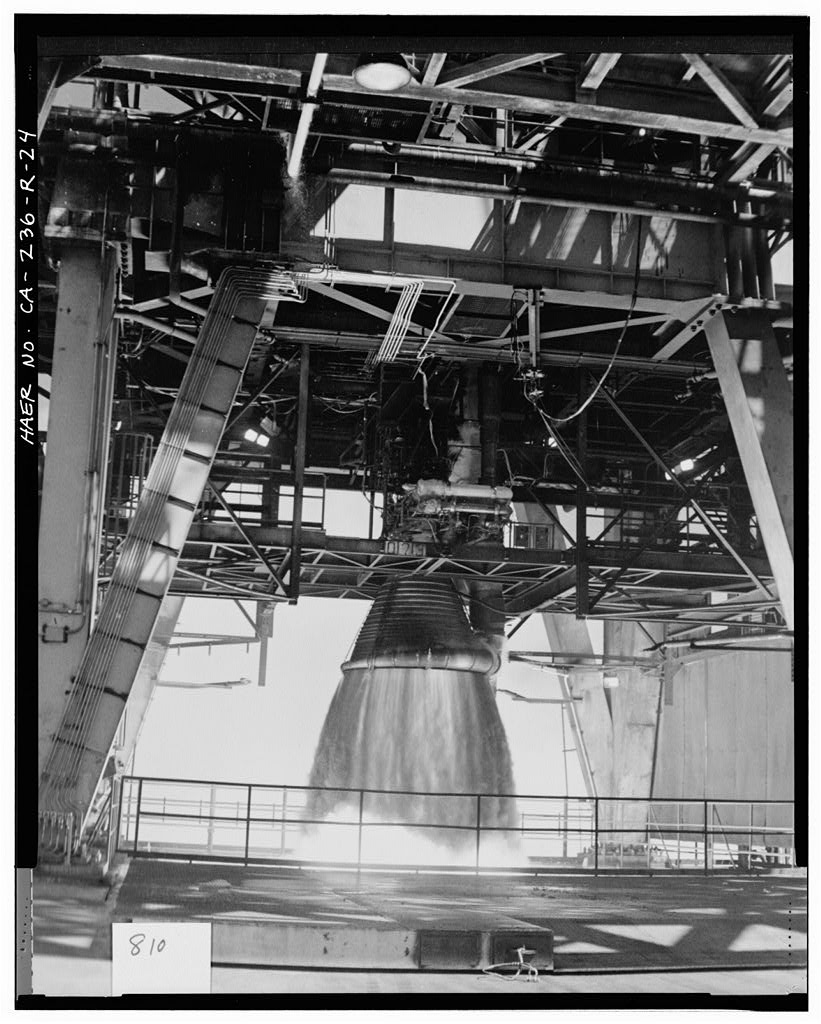
F-1 prototype test-firing in stand 1-A. This test engine is firing without its nozzle skirt, or rear part of the nozzle. (Source: HAER)
The biggest of the F-1 stands was Test Stand 1-C, which could hold a pair of engines side-by-side. As tall as an 11-storey building, it had foundations deep into the granite bedrock of the ridge in order to withstand the power of the engines.
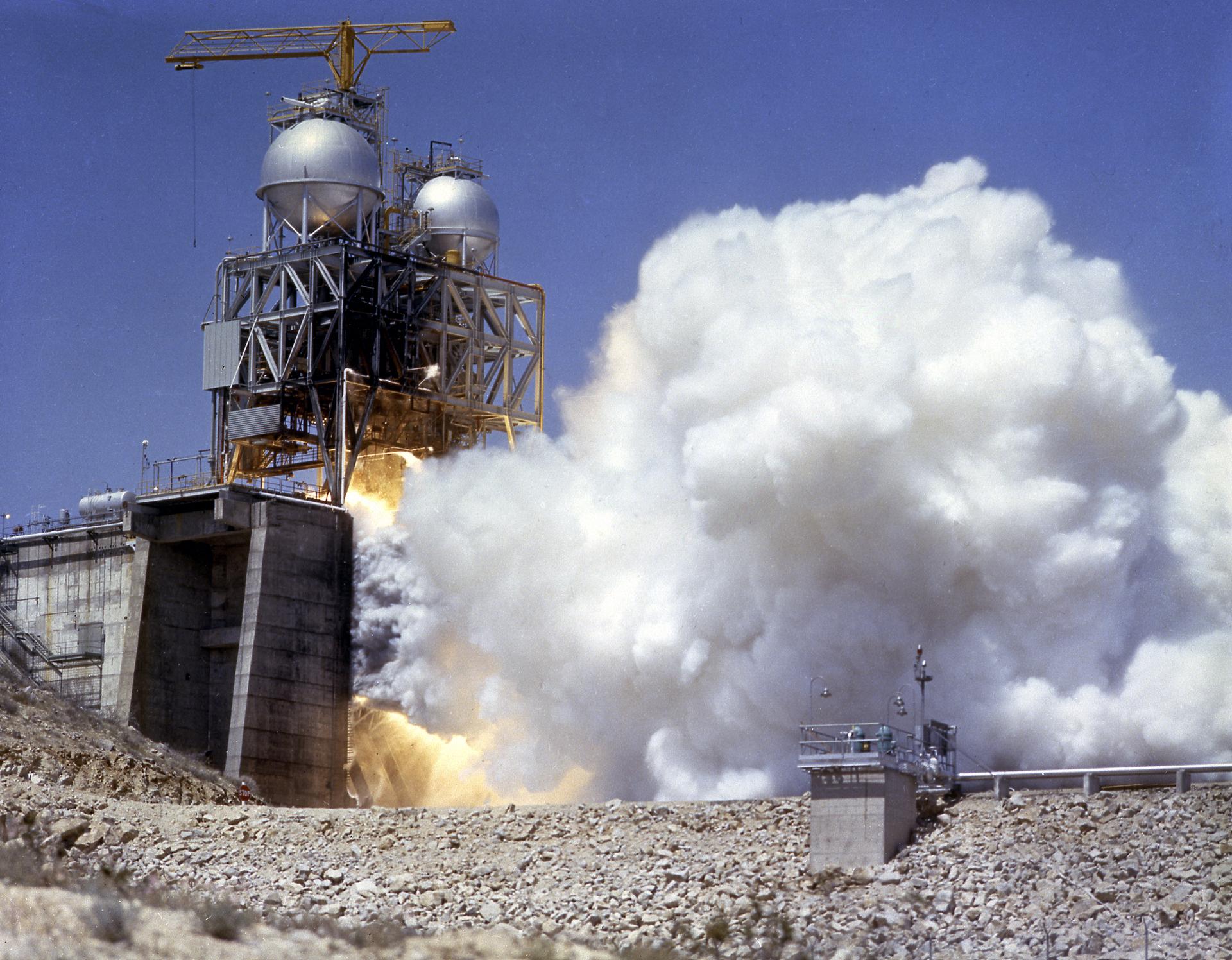
Test Stand 1-C during a test-firing of an F-1 engine in 1962. (Source: NASA)
Test Stand 1-C is the most prominent of the stands on Leuhman Ridge, because it now has a huge white building on top of it with an American flag painted down the side. Two similar test stands nearby, 1-D and 1-E, were also built for F-1 engine testing.
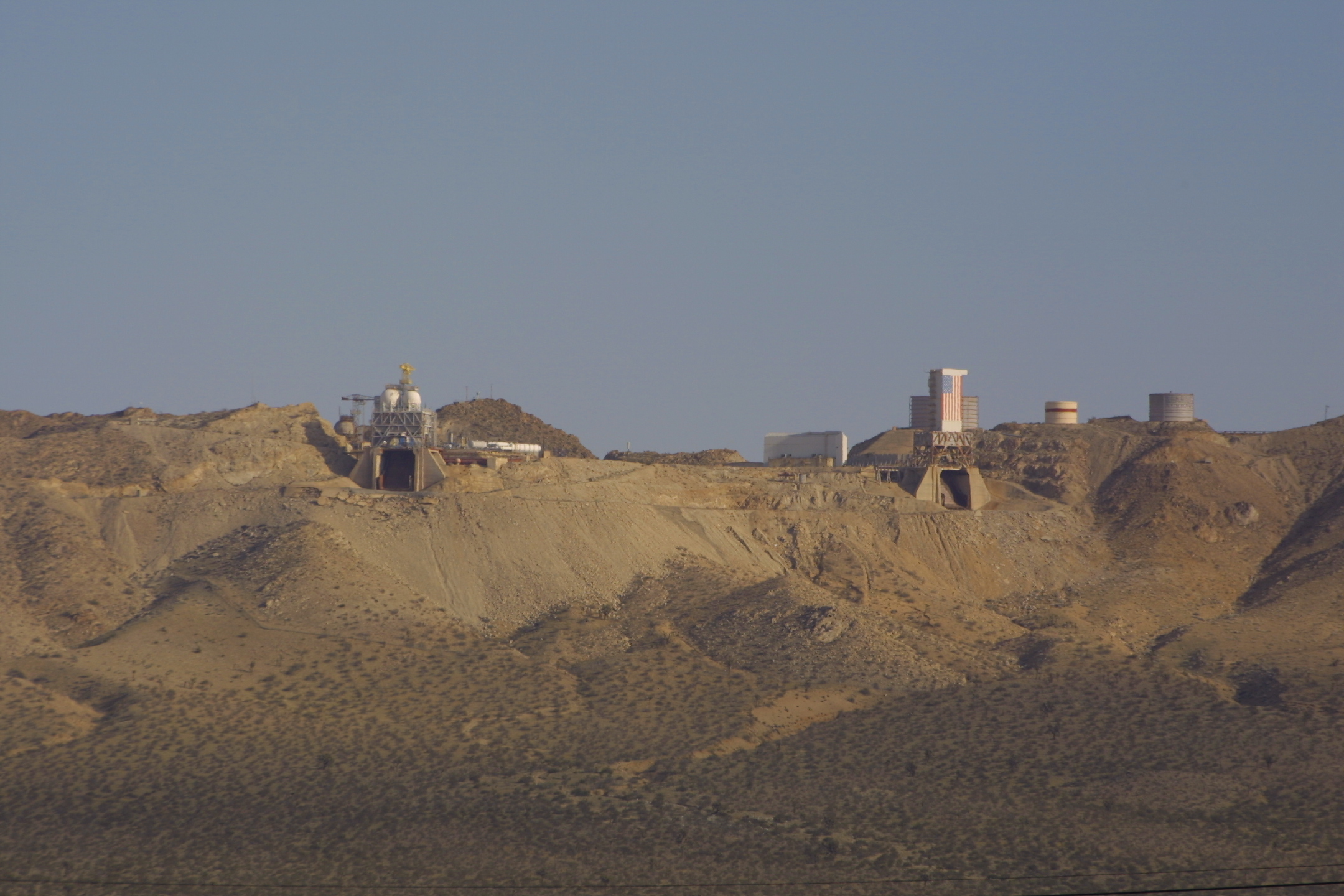
Apollo-era test stands on Leuhman Ridge: 1-D (L) and 1-C (R). Test Stand 1-C has been modified from its original configuration with the addition of a white tower on top, but 1-D looks about as it did in the 1960s. The large tanks directly behind and to the right of 1-C held water that was pumped over the flame deflector during tests. Test Stand 1-E is out of view on the other side of the ridge behind 1-D.
Since the Apollo-Saturn Program, some of the test stands have been modified for use on other programs. Even with the modifications, the stands are still visible relics of the Cold War and the race to the Moon.
Sources and links
- Roger E. Bilstein, Stages to Saturn: A Technological History of the Apollo/Saturn Launch Vehicles (Washington, DC: NASA History Office, 1980), 121-122, 123-125. [HTML] [PDF]
- Ivan D. Ertel and Mary Louise Morse, The Apollo Spacecraft: A Chronology (Washington, DC: National Aeronautics and Sapce Administration, 1969), 1:75. [PDF]
- https://www.loc.gov/resource/hhh.ca2576.photos?st=gallery Historic American Engineering Record of Air Force Rocket Propulsion Laboratory
- https://www.loc.gov/resource/hhh.ca2594.photos?st=gallery Historic American Engineering Record of Test Stand 1-A at Test Area 1-120
- https://forum.nasaspaceflight.com/index.php?topic=25057.0 Forum discussion about Edwards Air Force Base rocket test stands



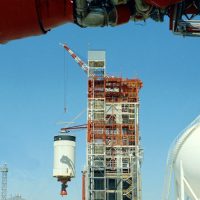
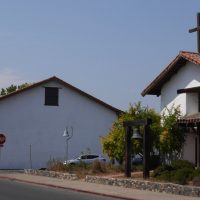
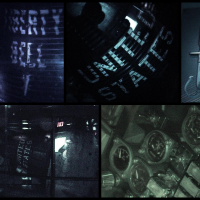
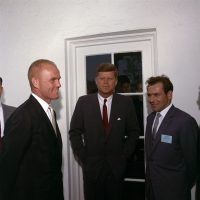
Bobby Sammons
I think you have the picture of the F-1 engine firing wrong. That is not Test Stand 1-C, that is 1-E. The items in the foreground are the pump controls for the recovery pumps located in the water recovery pond which is to the side of 1-E. Also as far as 1-C being used, or even designed for a double firing of the F-1 engine, I am doubting that. All three of those test stands are identical. Or were during the NASA F-1 certification process. Just as a note about that, all F-1 engines had to be man-rated before the actual flight. That meant each one was fired for the same length of time that it would be used during an actual mission.
I know that site like the back of my hand, I was part of the Titan IV SRM test program. I saw the crane topple at 1-C from 1-D and was in the control under 1-E when the first firing blew up on the test stand.
Willy
Hello, thanks for your comment. The identification of the test stand as 1-C comes from the image description in the NASA library: https://images.nasa.gov/details-6401638
As for the dual-position stand, that comes from Stages to Saturn by Roger Bilstein:
Does this sound like anything you have seen?
Bobby Sammons
Hi Willy. While I have not read Stages to Saturn by Roger Bilstein, all I can tell you is that all three, 1-C, 1-D, and 1-E are identical. Well, other than the way that 1-C was modified for the Titan test, and I guess now 1-D for some other project. I worked directly for the Hercules construction manager and had access to all the original blueprints and ended up being up and in all those test stands.
Also as far as the NASA description I have notified NASA that their description is wrong.
Jeff Roberson
Very interesting article! Like Mr Sammons, I too, was deeply involved with the test firings of the Titan IV SRMU (“Solid Rocket Motor Upgrade,”) qualification program conducted up on what we called: “Rocket Ridge,” from 1991 through 1993. I was working on field assignment for Hercules Aerospace as one of the Test Engineers responsible for the main data acquisition system used to collect the large quantity of instrumentation data during the test firings. I was in the “Safety Ops” building at the bottom of the hill on April 1, 1991 when the first test rocket blew up in spectacular fashion. No humans were injured, (and none of the endangered desert tortoises were harmed either; the Air Force would gather them all up off the ridge and take them to safety before each test – just in case.)
The complete and total destruction of the test stand (on “April Fools” day) put the entire project and all of our jobs in jeopardy, but the Air Force decided to forge ahead with the project. The test stand was quickly rebuilt better than ever and once completed, we had the unmitigated audacity to go ahead and PAINT A GIANT AMERICAN FLAG ON THE SIDE OF THE BUILDING! The next six firings went off without a hitch and the Titan IV SRMU qualification program successfully completed in late 1993. I was fortunate enough to be one of the members of the test crew in the control room located in a concrete bunker on top of the hill during the last five test firings. I distinctly remember that the tension in the room when the weather guys gave us the final green light at the T-minus 30 minutes mark, was palpable; and the tension was EXTREME when we got to the: “Ten, nine, eight, seven,…” point! The entire room (and the entire top of the mountain) shook from the very large forces and vibrations from the millions of lbs of thrust coming from the GIANT rocket motor, (110 ft long, 10 ft diameter, and 770,000 lbs.) Needless to say, this time spent up on rocket ridge was the highlight of my engineering career.
But the main point I’d like to make, (and the motivation for this comment,) is that I concur with Bobby; the test stand we used was indeed “1-E” and not 1-C, (if memory serves.)